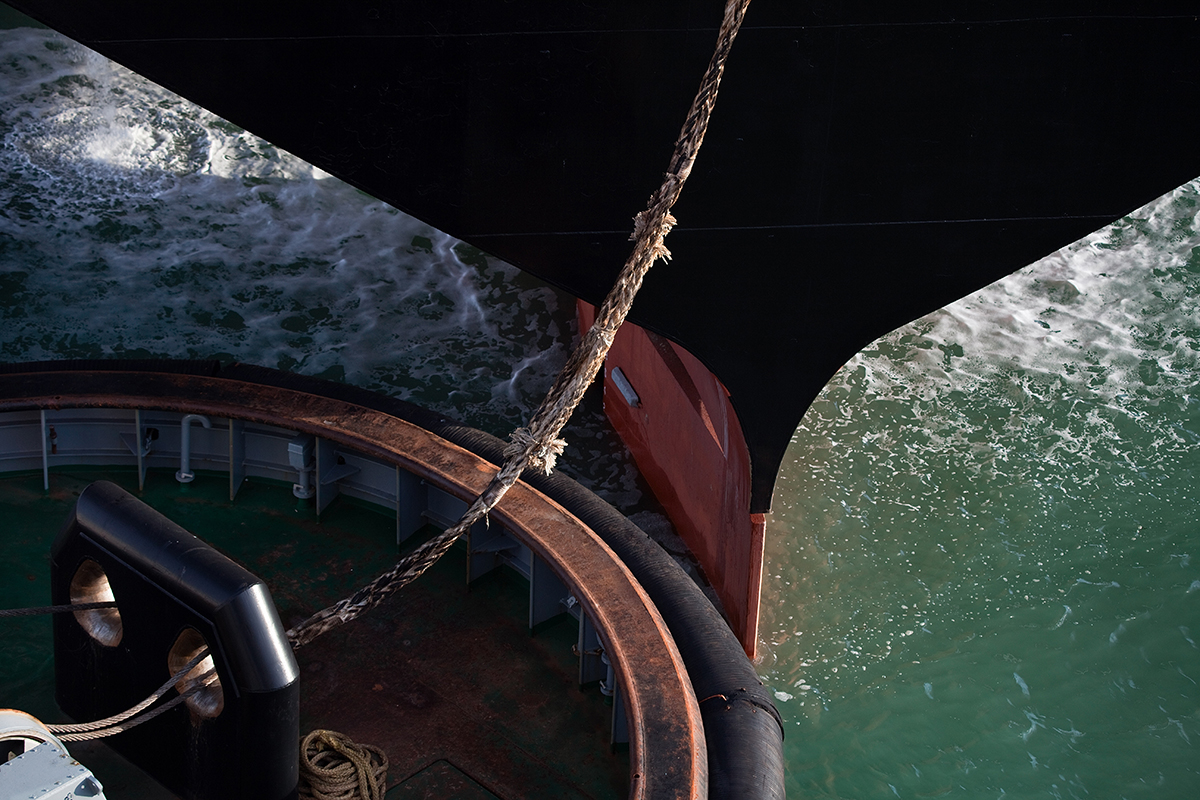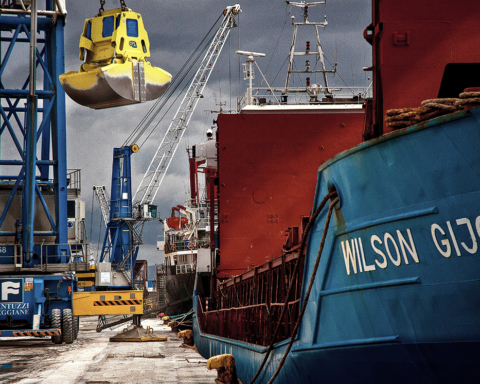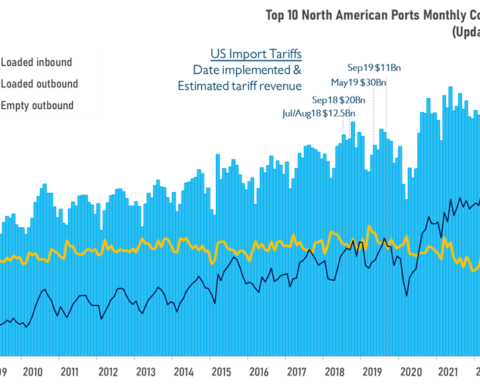Increasingly limited profit margins, markets under pressure, mega ships and an upward trend in available vessel cargo space. Here they are, the paradigms, anything but new, which the gateway ports will have to deal with in the near future. The Italian ones, above all, will have to work hard on upgrading their infrastructures and improving links in order to keep up with the times.
This, in a nutshell, is the core of the analysis that the Marketing Director of Contship Italia, Daniele Testi, has developed for Port News.
“The only port networks that can be successful in the face of the challenges of global competition – he says – are those able to connect to increasingly distant inland markets, with seabeds and quays able to accommodate ships that currently call at only a few ports. If we are not aware of this, we will not go anywhere.”
His reasoning is based on the fact that naval gigantism is not a reversible process: “We could call it ‘the new normal’, as it has been a consolidated trend since 2009, when operators began to respond to crises by seeking significant economies of scale. Nowadays, the risk, which is increasingly real for many contexts, is to be excluded from intercontinental services”.
Testi says this while reading the latest Drewry consultants’ forecasts, according to which, in 2020, the global cargo carrying capacity will increase by 660,000 TEUs, thanks to the launch of 28 ships of over 18,000 TEUs.
The most obvious consequences? “Mare Nostrum will be sailed by increasingly larger vessels as a result of the redeployment of those units that have become too small to operate on transoceanic routes.”
This is also certified by the consultancy firm Dynaliners. Their research shows that the capacity of container ships used on routes between the Mediterranean and the Far East has more than doubled over the last eight years, going from an average of 6100 TEUs per ship in 2010 to 12,700 TEUs in 2018.
Clearly, “the increase in available cargo space makes freight rates for lines to the Mediterranean more competitive. This happened in 2018, when – for 27 weeks out of 52 – freight levels for the Med area were lower than those applied to connections between Asia and the ports of the Northern Range, in the spot market at least.
There are, therefore, new opportunities on the horizon for our ports. They will have “the opportunity of becoming reference points for markets that are now very contestable, like Bavaria, Switzerland and Eastern Europe.”
All this, in an economic framework in which China will increasingly dominate the global scene. Testi admits it by pointing out that the centre of gravity of trade is shifting towards the East.
The latest results from La Spezia, a privileged vantage point for Contship Italia, certify this new scenario. “With reference to the Ligurian port, import volumes from the Far East and South East Asia have increased with growth rates of 9% over the first half of the year. China accounts for more than 60% of the total number of containers handled, but Singapore has also taken on a strategic role. It is acquiring growing traffic shares from the regions of South-East Asia, where China is decentralizing part of its production as a result of rising costs in coastal areas”.
On the other hand, export volumes, which affect the overall result of the key North Tyrrhenian (Genoa and La Spezia) and the North Adriatic (Venice and Trieste) port networks, as the only gateways with direct services from the Far East, show an opposite trend. “In 2018 these four ports grew by about 3% compared to 2017, with a better performance in the Adriatic, which accounts for 17% of Italian Gateway ports, compared to 52% of the Ligurian network”.
According to Testi, the national port system remains fragile: “The growth in size of ships and the increased commercial capacity of shipping lines are putting pressure on both infrastructure systems (quays, yards, seabeds and equipment) and land transport nodes. Our country needs efficient rail connections, in synergy with a network of intermodal platforms positioned in the main consumer and production markets”.
The time factor will be decisive: “We know that the introduction of greater ship cargo-carrying capacity means increases over a period of 12 to 24 months. while developments in the rail and road systems have ten-year cycles. The choices that made today will therefore determine the competitive future of the system over at least the next 20 years.”
Italy is playing ‘the game of its life’ on land rather than at sea: «RFI (the Italian Railway Network) has started a program of significant investments in view of having the so-called European train (750m long, with a 2000 ton capacity). These upgrading works on the national line must be completed on time, i.e. at the same time as the opening of the new Gotthard tunnel”.
Failure to achieve this objective could have devastating effects on the national economy: “the risk is that increasing amounts of traffic will be diverted to Northern Europe and then go down to the Po Valley”.
According to Testi, Italy faces two problems: one of a historical nature, linked to the presence of ports inside the city’s fabric (which limits the ability of the former to expand quays and yards and develop rail links), and one of a cultural nature: “Even today we find it hard to recognize how much the logistics and transport sector is a lever of economic development that requires a medium/long-term industrial vision that is difficult to translate into precise cost/benefit analyses. We need a cultural disintermediation so that shippers (the owners of the goods) start to see logistics and shipments as a value and not just simply as a cost to be continually reduced.
For Contship’s marketing director, the truth is that these days the centrality of Europe “is increasingly called into question when, instead, a general infrastructure plan is needed to enhance both the Northern and the Southern banks of the Mediterranean”.
This is an argument that “Chinese companies seem to be more interested in than the continent’s institutional decision-makers”.
Translation by Giles Foster




